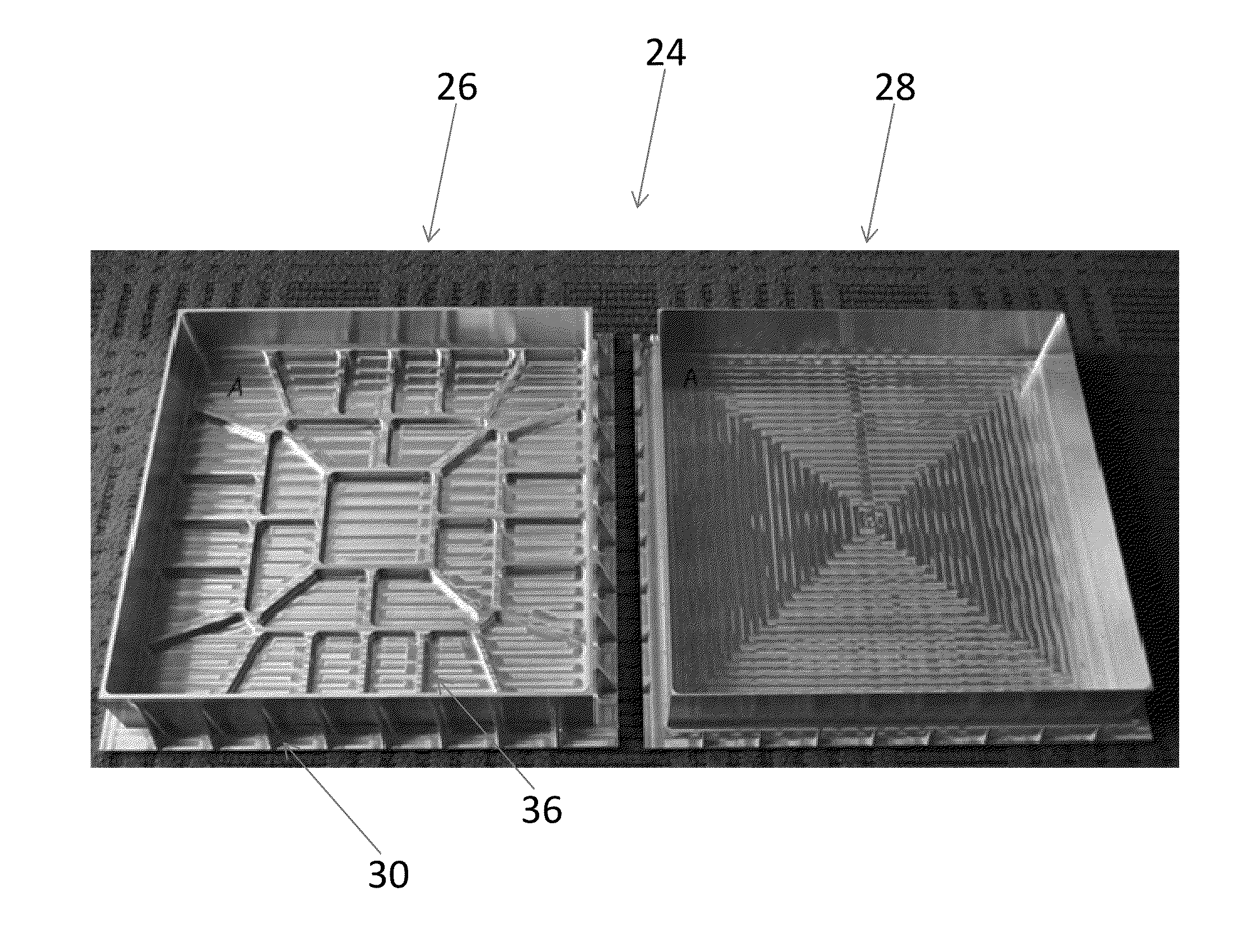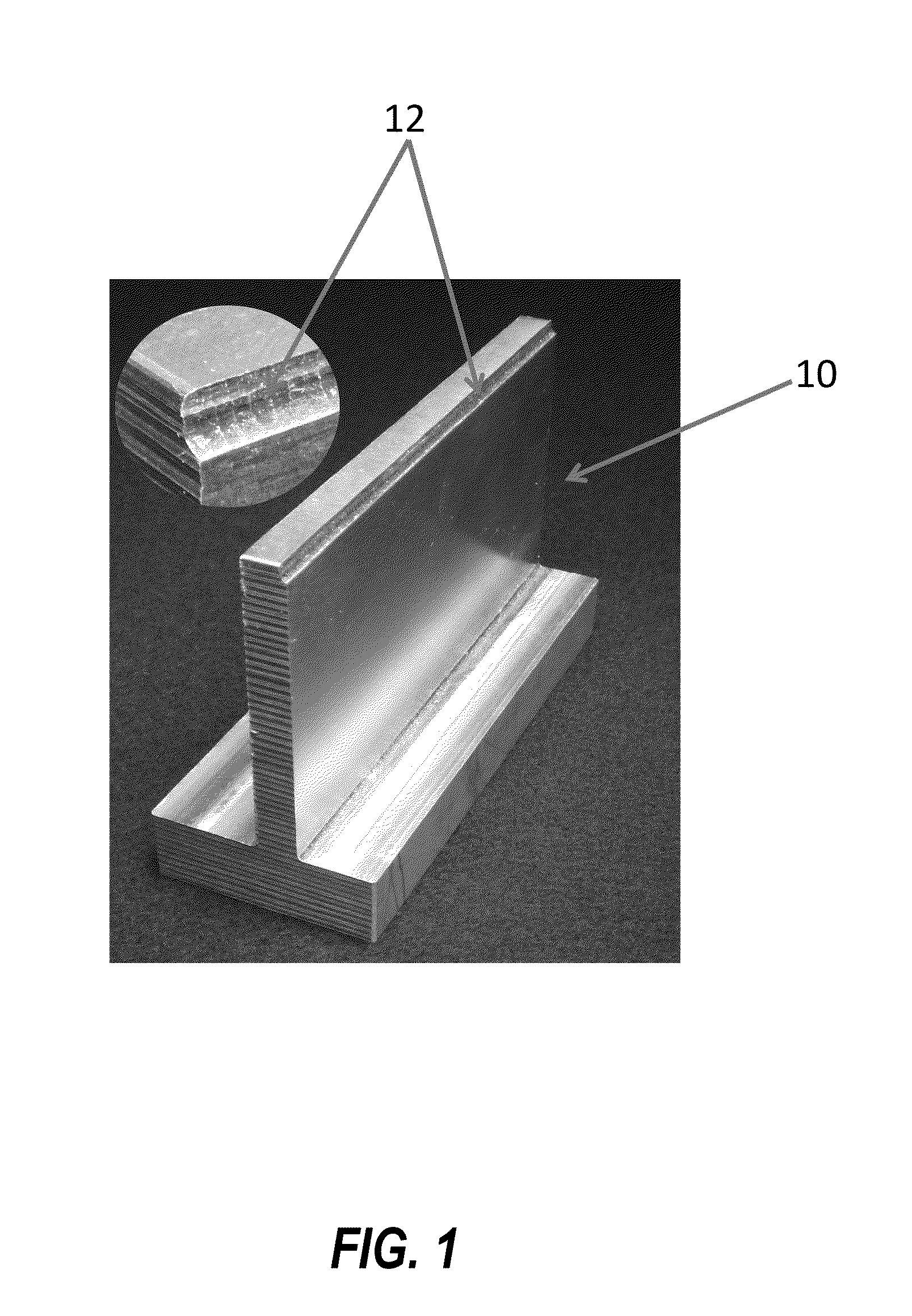Manufacturing methods and systems using sacrificial structure preforms
a technology of sacrificial structure and manufacturing methods, applied in the field of sacrificial structure preforms, can solve the problems of tool wear requirements, materials are far too expensive to necessitate all the excess required, and the technique has not really proved useful for difficult-to-machine and expensive materials, etc., to achieve sufficient material stiffness, low cost, and high efficiency
- Summary
- Abstract
- Description
- Claims
- Application Information
AI Technical Summary
Benefits of technology
Problems solved by technology
Method used
Image
Examples
Embodiment Construction
[0020]Again, in various exemplary embodiments, the present disclosure provides manufacturing methods and systems for the high-precision machining of thin parts from difficult-to-machine and expensive materials with high efficiency and low cost. Sacrificial structure preforms are used that have geometries that offer sufficient material stiffness during machining, minimize material usage, and reduce tool wear effects. In general, the sacrificial structure preforms: (1) have a geometry that completely contains the shape of the finished component while minimizing workpiece material consumption; (2) utilize sacrificial structure stiffeners that provide the sacrificial structure preform with a stiffness that is higher than that of the finished component; and (3) utilize sacrificial structure stiffeners that are configured and positioned to support expected machining forces, while minimizing tool wear associated with their eventual removal. These sacrificial structure preforms support a pa...
PUM
| Property | Measurement | Unit |
|---|---|---|
| thick | aaaaa | aaaaa |
| thick | aaaaa | aaaaa |
| thick | aaaaa | aaaaa |
Abstract
Description
Claims
Application Information
 Login to View More
Login to View More - R&D
- Intellectual Property
- Life Sciences
- Materials
- Tech Scout
- Unparalleled Data Quality
- Higher Quality Content
- 60% Fewer Hallucinations
Browse by: Latest US Patents, China's latest patents, Technical Efficacy Thesaurus, Application Domain, Technology Topic, Popular Technical Reports.
© 2025 PatSnap. All rights reserved.Legal|Privacy policy|Modern Slavery Act Transparency Statement|Sitemap|About US| Contact US: help@patsnap.com



